New WaveTrain® 3D CW Frequency Doublers
Overview
External Cavity Frequency Double For CW Lasers
- Input wavelength range 412 to 1600 nm
- Low cavity losses and high doubling efficiencies
- Continuous scans of 65 GHz at 10 GHz per second
- Sealed cavity block and body with external adjustments prevent contamination of optics
- Only two pre-mounted mirrors for quick change of wavelength ranges
- Low cavity losses and high doubling efficiencies
Products
Applications
- Quantum Physics
- High-resolution UV spectroscopy
- Atom cooling and magneto-optic trapping
- Tunable UV experiments
- Bose-Einstein condensates
- Atomic clocks
- Holography
- Metrology
Specifications
WaveTrain 3D Specifications1
Wavelength Range |
670-1050 nm | 550-780 nm | 412-550 nm | 1050-1600 nm |
|---|---|---|---|---|
| Automated Scan Range | >40 GHz | >65 GHz | >65 GHz | >40 GHz |
| Phase-Match Tuning2, 3 | ±25 nm @ 800 nm | ±15 nm @ 660 nm | Contact factory | Contact factory |
| Maximum Scan Rate | 10 GHz/sec (fundamental) | |||
Efficiency4 |
||||
| Input Power | ||||
| 300-600 mW | >6% | >4% | 4-10% | >12% |
| 600-1300 mW | >15% | >10% | 4-10% | >12% |
| 1300-3000 mW | >25% | >15% | 4-10% | >12% |
| 3000-10000 mW | >35% | >15% | 4-10% | >12% |
Requirements |
||||
| Pump Laser | TEM00, M2<1.1, Single frequency laser Linewidth <10 MHz, linear polarized |
|||
| Ambient Conditions | Constant temperature in the 20-25°C range | |||
| Laboratory | Vibrational isolated optical table, dust-free air (flow box) | |||
| Voltage | 115/230 V, single phase, 50/60 Hz | |||
Physical Characteristics |
||||
| Size (L x W x H) | 19.88 x 11.02 x 8.43-9.45 in (505 x 280 x 214-240 mm) | |||
Footnotes:
- Due to our continuous product improvement program, specifications may change without notice.
- Phase-match tuning is defined by an intensity reduction of 50% in the SHG.
- Crystal cut wavelength may vary by 1%.
- Specifications for 670-1050 nm and 550-780 nm tuning range only with Matisse Ti:Sapphire and dye lasers.
Features
WaveTrain 3D Patented Cavity Design
WaveTrain 3D is an advanced stand-alone device that provides simple frequency doubling of single frequency CW laser beams. With greater efficiency than traditional intra-cavity or extra-cavity methods, this product can be used to generate the second harmonic of the output of Matisse® series lasers, as well as to generate harmonics of the output from MixTrain and WaveTrain modules.
WaveTrain 3D utilizes a ring cavity to achieve efficiencies greater than 35%. Unlike conventional bow-tie cavities, WaveTrain 3D is based on a patented triangle-shaped cavity configuration called the DeltaConcept™, which allows the cavity length to be adjusted with no effect whatsoever on output beam position, direction or beam astigmatism.
WaveTrain 3D Stability
Output stability is further enhanced by the use of a lightweight piezo-activated prism to optimize the cavity length, making the WaveTrain 3D especially resistant to vibrations and acoustic noise. This inherent beam stability enables the fully digital control hardware to automatically lock the cavity for maximum doubling efficiency during both fixed frequency and scanned operation.
Maximum Wavelength Flexibility
Ease of access and the use of pre-mounted modular optics and crystals insure maximum wavelength flexibility, enabling the WaveTrain 3D to be operated effectively over the entire 412–1600 nm input wavelength range.
Digital Control Electronics with Touchscreen and GUI Interface
WaveTrain 3D features fully redesigned digital control electronics with a touchscreen and optional GUI interface. The platform is ready for integration into the most demanding scientific and industrial applications that require automation and computer control of laser equipment.
Compatible Power Sensors
To verify and analyze the output power of your WaveTrain 3D laser, we recommend the Ophir thermal power sensor (contact sales-selection depends on application) and Centauri laser power meter. Additional information on this laser measurement equipment can be found on the ophiropt.com website. Other Ophir sensors and meters may also be suitable for the WaveTrain 3D, depending on application. Ophir also works with laser system developers to achieve embedded beam diagnostics to monitor system performance as an OEM solution.
Resources
Data Sheets
- WaveTrain-3D-Datasheet (547.8 kB, PDF)
Literature
- Ultrafast Lasers Brochure (4.6 MB, PDF)
- CW Tunable Lasers Brochure (3.8 MB, PDF)
- Advancing Photonics-Based Quantum Technologies Research (7.3 MB, PDF)
Drawings & CAD
- WaveTrain-3D Dimensions (192.5 kB, PDF)
Technical Articles
- What Does It Take to Build and Maintain a Quantum Lab?
- Quantum Applications Jump Forward with Photonics
Pre-installation Guides
- WaveTrain® Pre-installation Guide (102.1 kB, PDF)

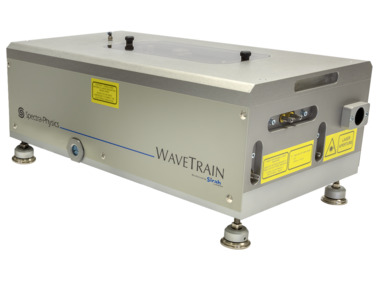
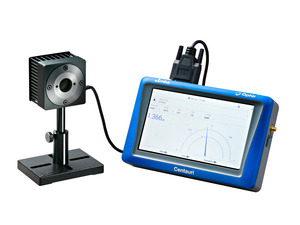
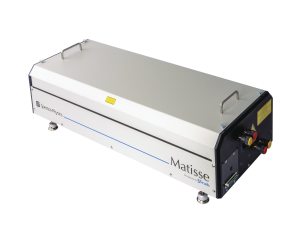
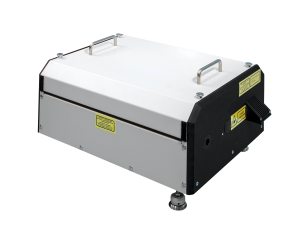
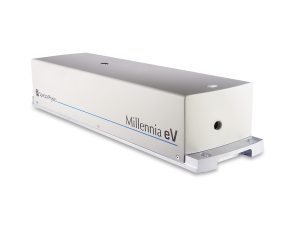
 Ultra-High Velocity
Ultra-High Velocity